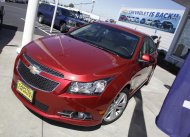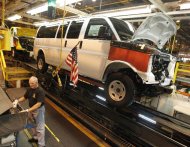What ias ABinBEV?
It was created in 2008 when InBev, the Leuven (Belgium)-based owner of Beck’s and Stella Artois, swallowed Anheuser-Busch, the maker of Budweiser, in a $52 billion hostile takeover. Today, AB InBev is the dominant beer company in the U.S., with 48 percent of the market. It controls 69 percent in Brazil; it’s the second-largest brewer in Russia and the third-largest in China. The company owns more than 200 different beers around the world. It would like to buy more.

Why have they been considered bad for the Beer Industry as a whole?
Consider the experience of Becks Beer fan Brian Rinfret:
Brian Rinfret likes imported beer from Germany. He sometimes buys Spaten. He enjoys an occasional Bitburger. When he was 25 years old, he discovered Beck’s, a pilsner brewed in the city of Bremen in accordance with the Reinheitsgebot, the German Purity Law of 1516. It said so right on the label. After that, Rinfret was hooked.
One Friday night in January, Rinfret, who is now 52, stopped on the way home from work at his local liquor store in Monroe, N.J., and purchased a 12-pack of Beck’s. When he got home, he opened a bottle. “I was like, what the hell?” he recalls. “It tasted light. It tasted weak. Just, you know, night and day. Bubbly, real fizzy. To me, it wasn’t German beer. It tasted like a Budweiser with flavoring.”
He examined the label. It said the beer was no longer brewed in Bremen. He looked more closely at the fine print: “Product of the USA.” This was profoundly unsettling for a guy who had been a Beck’s drinker for more than half his life. He was also miffed to have paid the full import price for the 12-pack.
Rinfret left a telephone message with AB InBev (BUD), the owner of Beck’s and many other beers, including Budweiser. Nobody got back to him. He had better luck with e-mail. An AB InBev employee informed him that Beck’s was now being brewed in St. Louis along with Budweiser. But never fear, the rep told Rinfret: AB InBev was using the same recipe as always.
He wasn’t satisfied. In March, he posted a plea on Beck’s official Facebook (FB) page: “Beck’s made in the U.S. not worth drinking. Bring back German Beck’s. Please.” He had plenty of company. “This is a travesty,” a fellow disgruntled Beck’s drinker raged. “I’m pretty bummed,” wrote another. “I’ve been drinking this beer religiously for over 20 years.” Rinfret kept trashing Beck’s on Facebook. Until, he says, AB InBev unfriended him in May. “They banned me from their site. I can’t post anything on there any longer.”
Rinfret was only temporarily silenced. He now complains on a Facebook page called Import Beck’s from Germany. AB InBev may be paying a price for disappointing Beck’s loyalists like him. According to Bump Williams, a beer industry consultant in Stratford, Conn., sales of Beck’s at U.S. food stores were down 14 percent in the four weeks ending Sept. 9 compared with the same period last year. “They are getting their proverbial asses kicked,” Williams says. “Too many customers were turned off when the switch was made.” Sales of Budweiser in the U.S. have fallen recently, too. And yet AB InBev is extraordinarily profitable.
For Further Details please read the full article "The Plot to Destroy America's Beer" published by BusinessWeek.
Questions for Discussion:
ECON 2302
1. In what output market structure is ABinBEV producing in? Support this with evidence from teh article or other sources that you cite.
2. What technical elements from Microeconomics has ABinBEV's CEO Carlos Brito managed to do very well in working? What qualitative elements has Brito and ABinBEV handled poorly?
3. Who are the Competitors of ABinBEV? How can they benefit from possible mistakes that Brito is making in how they are brewing beer?
ECON 2301
1. What economic phenomenon has led to such a company as ABinBEV? Be specific and explain how it fits that definition.
2. What are the possible regulatory issues ABinBEV may run into for brewing Becks beer in St. Louis, MO rather than Bremen, Bavaria, Germany?
3. What other choices do consumers have and how can that influence ABinBEV to change its business practices?
As always I want to see well thought out comments posted, with your name, class, campus, days and times. You may earn 1 or 2 extra credit points applied to your Final Exam if the comments are top notch.
Success to you all!
Prof. Hank



















